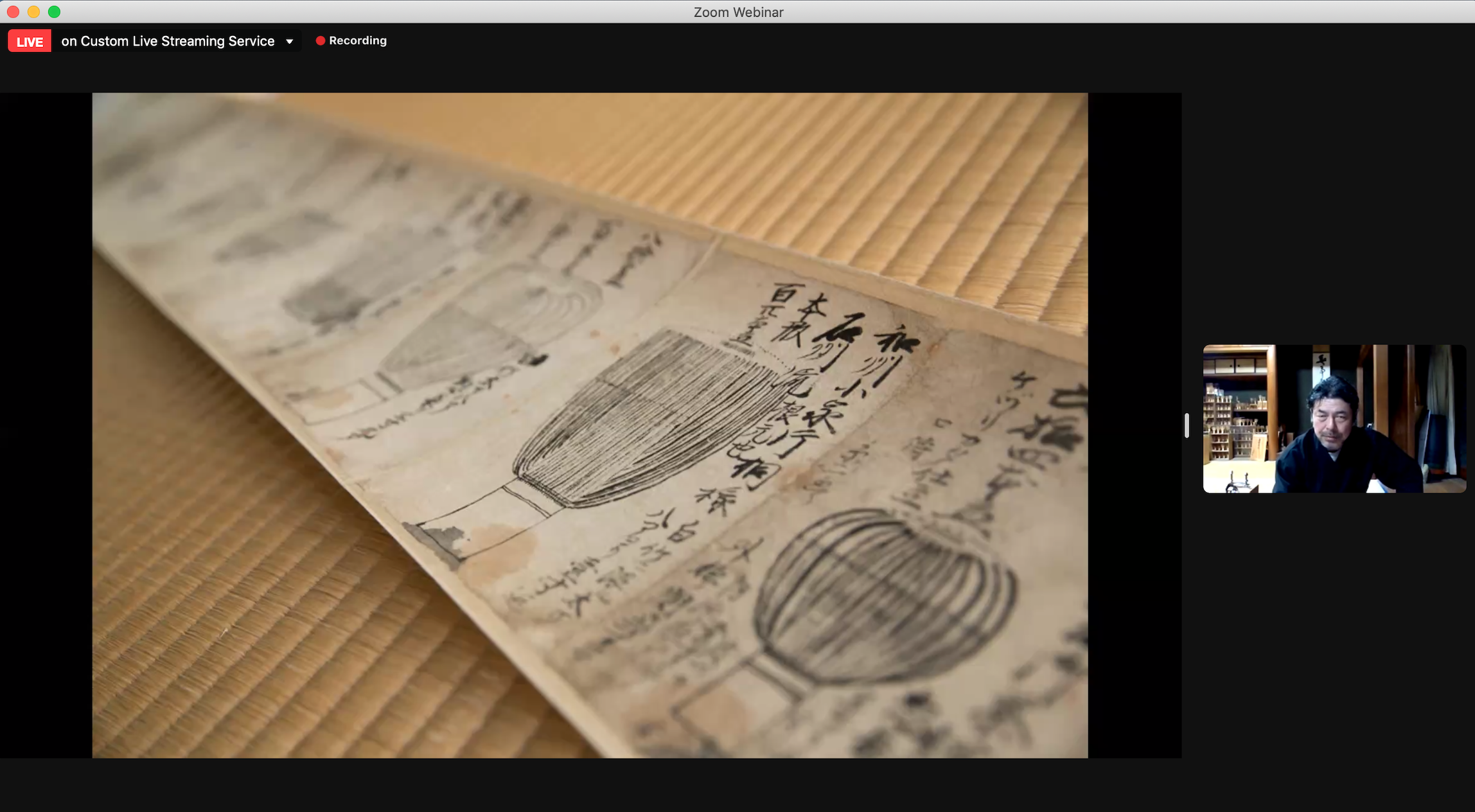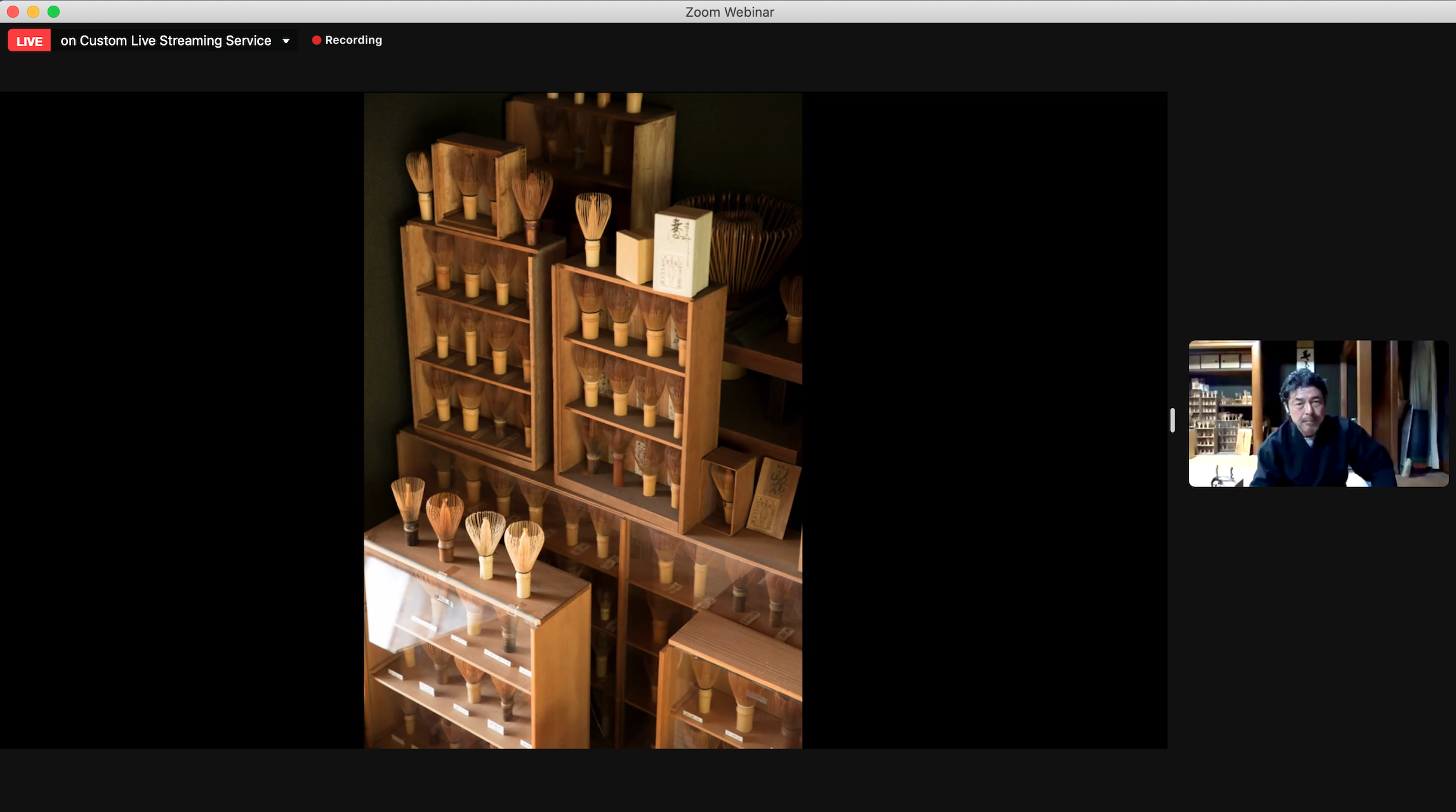The traditional whisk used to prepare matcha is called chasen (茶筅). It was invented in Takayama, a little mountain town in Nara prefecture, around 500 years ago! Nowadays, Takayama still makes 99% of the chasen handcrafted in Japan – and the reason for that is because every family made sure to keep its crafting method a secret! On 1st February, 2022 Japan House London organised a beautiful webinar about Takayama chasen with a very important guest speaker: Tango Tanimura, who is a 20th generation chasen craftsman from Takayama. Tanimura-san kindly showed his workshop to the participants and even the process of making a chasen, while also explaining the history of this particular tea tool.
It is believed that the chasen was invented in Takayama 500 years ago. Before it, a similar bamboo whisk of Chinese origin called “sasara” was used. Sasara is similar to chasen, but it would not be able to make foam in the tea. The most distinguish feature of chasen compared to sasara are the tips of the whisk: in chasen the external ones are facing in while the internal ones are facing out.

Tanimura-san also explained that the bamboo used is of a specific type, called “hachiku”. This kind of bamboo is known grow very straight and to be hard and very fibrous. It is perfect for the chasen. The bamboo is cut in winter and steamed in a special oven.

Only then it is dried at sunlight. The drying takes place between January and March when the sun is still mild and it does not often rain.


A very old drawing of bamboo whisks was shown during the webinar: this is very valuable, because traditionally the making was kept a secret inside the family of chasen makers – and even inside the family, only one child was able to inherit the method. In the old days, Takayama people were worried that chasen making would be taken over by other regions, that is why is was so strictly kept a secret. And that is probably the reason why even nowadays handmade Japanese chasen are practically only made in Takayama. Today, the process of making a chasen in the Tanimura family is still the same as it was many years ago.

We could see live the first step of chasen making. The skin of the first top half of the piece of bamboo is peeled, because the skin of bamboo is very hard and it would affect how it bends. When you shake a properly made chasen, its tips are supposed to shake as well. Tanimura-san used a big knife to split the bamboo from the top; he first splits it in 16 parts, making sure not to reach the nod. He explained that humidity is a big factor during this step – both in the bamboo and in the room. After that, the knife goes in and up through each section and the bamboo is bent at the same height in all the sections. The maker has to be gentle, too much pulling would break it: this could only be done with bamboo, not with any other material, because the bamboo is very fibrous and flexible. Then the inside layer of the bamboo is taken out. The second process of chasen making is called “Koari” and it consists in splitting the whisk further in the desired number of sections. After this, the chasen is soaked in hot water to soften the tines. The third process is called “Hajikazuri” and it consists of shaving the tines to thin them. The ideal thickness is measured by the craftsman’s fingertips – this thickness is what really makes the chasen. It cannot be too thick nor too thin. A chasen will be very flexible only if the tines are very fine. During the last process, called “Mentori”, the corner of each outside tine is removed to make them even more flexible. The exception is for chasens that are to be used for Koicha (thick tea), where the outer layer of the tines is wider – because they need to be stronger and more durable.

Now it is time to place the thread – this part was traditionally done by women. A thread is weaved at the base of the tines to spread them out; usually the thread was black in colour, but recently more colourful threads have become popular. At this point, the chasen could already be used to whisk tea, but the craftsman adds the finishing touches. The edges of the tines are curled and arranged beautifully to finish – and to adjust how they bend.

What an incredible work (and a time-consuming process!) is chasen making. Maybe next time we prepare a bowl of matcha, we should remember how much work and passion goes into making that little bamboo whisk.

